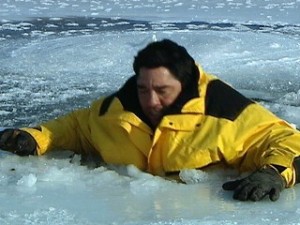- You can’t always tell the strength of ice simply by its look, its thickness, the temperature or whether or not it is covered with snow.
- Clear ice that has a bluish tint is the strongest. Ice formed by melted and refrozen snow appears milky, and is very porous and weak.
- Ice covered by snow always should be presumed unsafe. Snow acts like an insulating blanket and slows the freezing process. Ice under the snow will be thinner and weaker. A snowfall also can warm up and melt existing ice.
- If there is slush on the ice, stay off. Slush ice is only about half as strong as clear ice and indicates the ice is no longer freezing from the bottom.
- Be especially cautious in areas where air temperatures have fluctuated. A warm spell may take several days to weaken the ice; however, when temperatures vary widely, causing the ice to thaw during the day and refreeze at night, the result is a weak, “spongy” or honeycombed ice that is unsafe.
- The DNR does not recommend the standard “inch-thickness” guide used by many anglers and snowmobilers to determine ice safety. A minimum of four inches of clear ice is required to support an average person’s weight on the ice, but since ice seldom forms at a uniform rate it is important to check ice thickness with a spud and ruler every few steps.
Skip to content
Risk Profile Improvement

